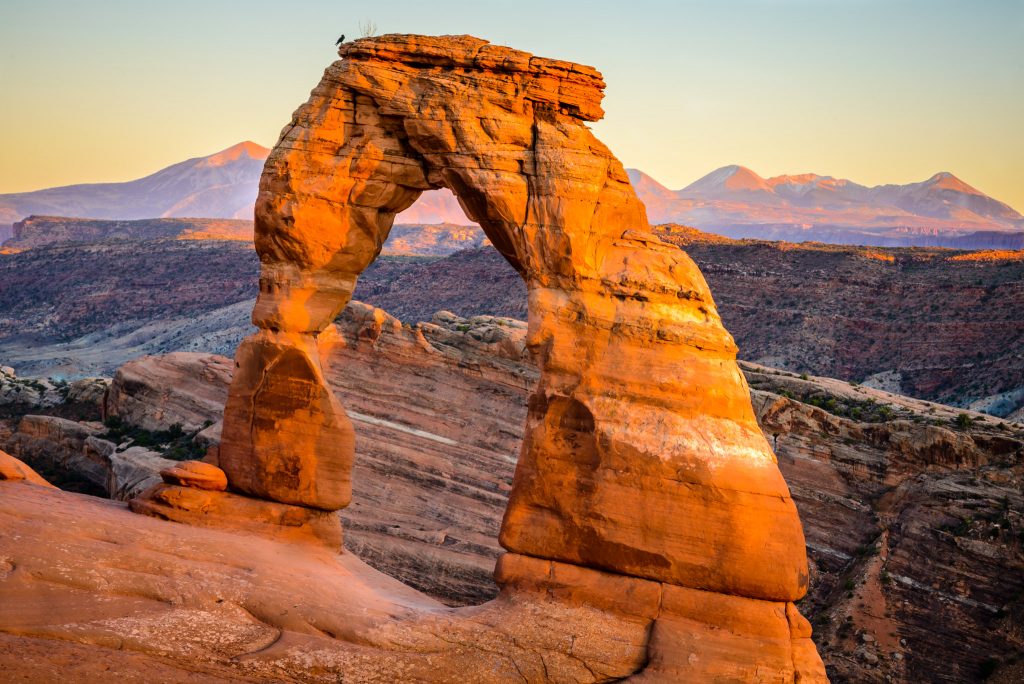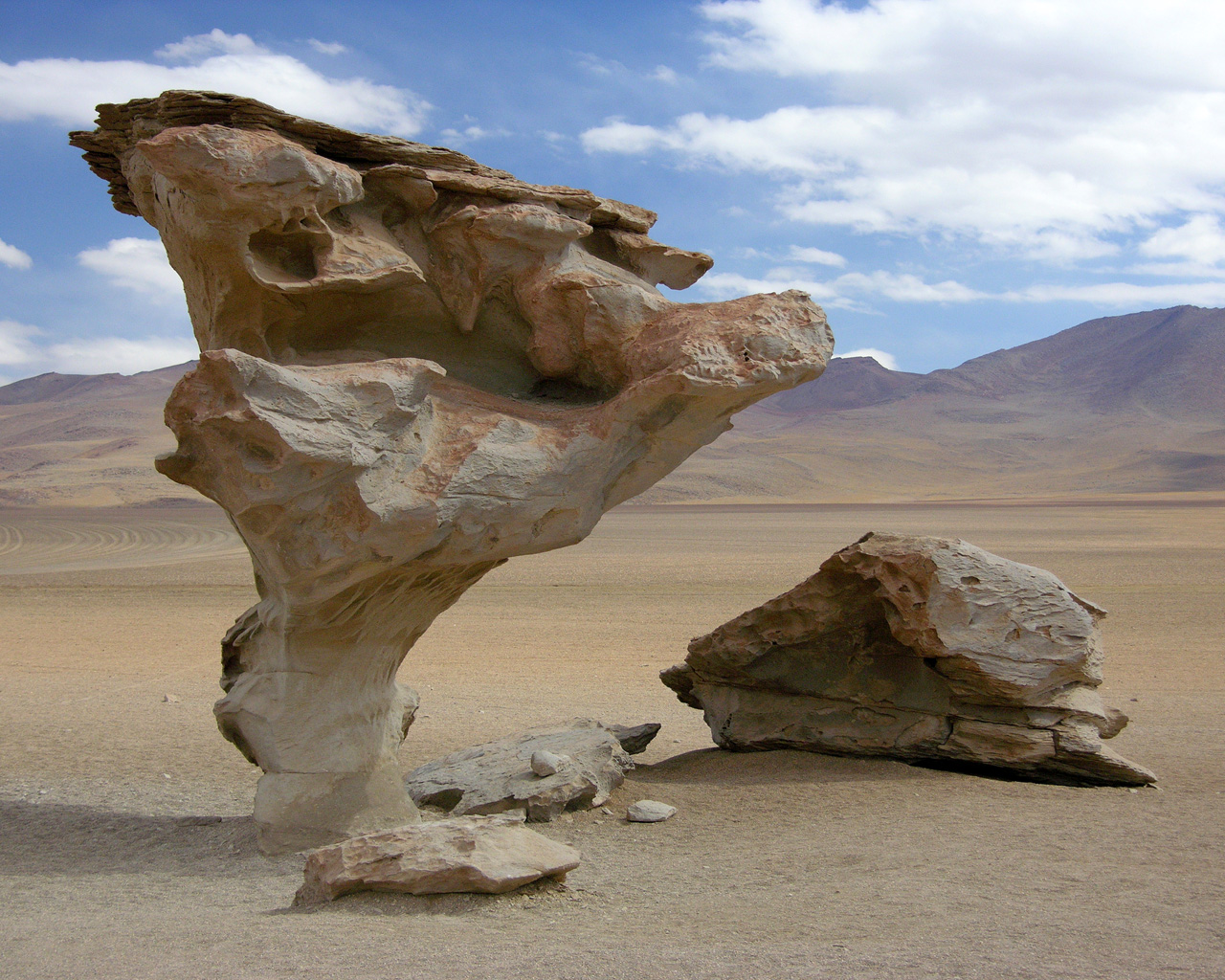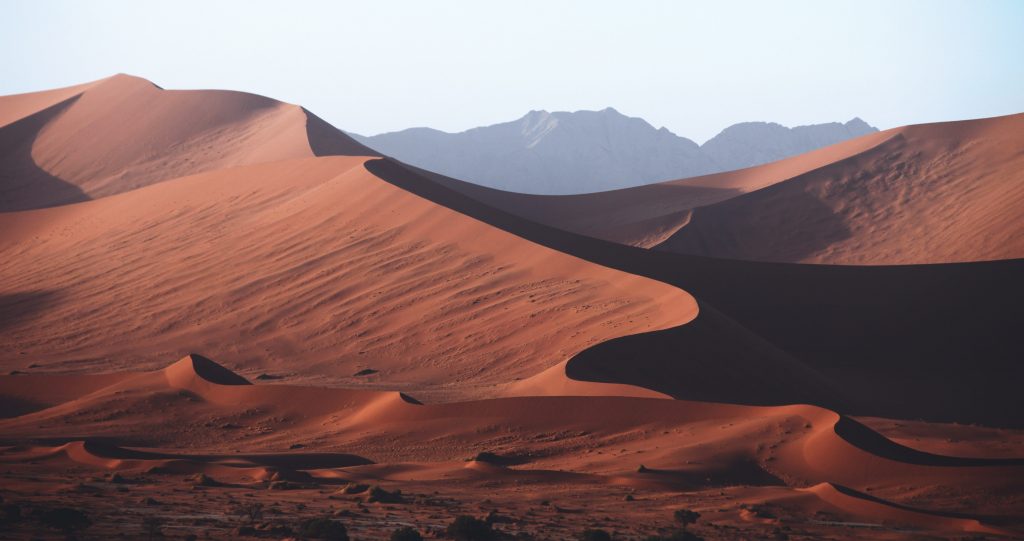Weathering, Erosion, and Deposition
5.5 Transport by Wind
The power of the wind to erode depends on particle size, wind strength, and whether the particles can be picked up. Wind is a crucial erosional force in arid than humid regions. Wind transports small particles, such as silt and clay, over great distances, even halfway across a continent or an entire ocean basin. Particles may be suspended for days. Wind more easily picks up particles on the ground that has been disturbed, such as a construction site or a dune. Just like flowing water, wind transports particles as both bed load and suspended load. For wind, bed load is made of sand-sized particles, many of which move by saltation. The suspended load is tiny particles of silt and clay.
Wind Erosion
Wind is a more potent erosional force in arid regions than it is in humid regions. In humid areas, water and vegetation bind the soil, so it is harder to pick up. In arid regions, small particles are selectively picked up and transported. As they are removed, the ground surface gets lower and rockier, causing deflation. What is left is desert pavement, a surface covered by gravel-sized particles that are not easily moved by wind.

Particles moved by the wind do the work of abrasion. As a grain strikes another grain or surface, it erodes that surface. Abrasion by wind may polish natural or human-made surfaces, such as buildings. Stones that have become polished and faceted due to abrasion by sand particles are called ventifacts.
Exposed rocks in desert areas often develop a dark brown to black coating called desert varnish. Wind transports clay-sized particles that chemically react with other substances at high temperatures. The coating is formed of iron and manganese oxides. Often petroglyphs are carved into the desert varnish by earlier civilizations in arid regions.

Wind Deposition
Deserts and seashores sometimes have dunes. Beach dunes have different compositions depending on their location, and are usually quartz because, in humid areas, other minerals weather into clays. In the tropics, dunes may be composed of calcium carbonate, which is typical. In deserts, sand dunes may be composed of a variety of minerals. There is little weathering, and so less stable minerals are left behind.
Sand dunes are usually very uniform in size and shape. Particles are sand-sized because more massive particles are too heavy for the wind to transport by suspension. They are rounded since rounded grains roll more easily than angular grains.

For dunes to form, there must be an abundant supply of sand and steady winds. A strong wind slows down, often over some obstacles, such as a rock or some vegetation, and drops its sand. As the wind moves up and over the obstacle, it increases in speed. It carries the sand grains up the gently sloping, upwind side of the dune by saltation. As the wind passes over the dune, its speed decreases — sand cascades down the crest, forming the slip face of the dune. The slip face is steep because it is at the angle of repose for dry sand, about 34 degrees.
Wind deposits dunes layer by layer. If the wind changes directions, cross-beds form. Cross beds are named for the way each layer is formed at an angle to the ground. The types of a dune that forms depend on the amount of sand available, the character and direction of the wind, and the type of ground the sand is moving over.
Loess
Windblown silt and clay deposited layer on a layer over a large area are loesses that come from the German word loose. Loess deposits form downwind of glacial outwash or desert, where fine particles are available. Loess deposits make very fertile soils in many regions of the world.
Fine-grained mud in the deep ocean is formed from silts and clays brought from the land by the wind. The particles are deposited on the sea surface, then slowly settle to the deep ocean floor, forming brown, greenish, or reddish clays. Volcanic ash may also settle on the seafloor.


